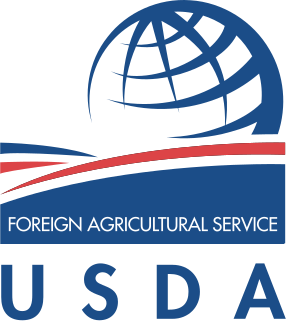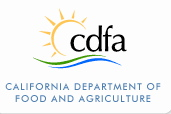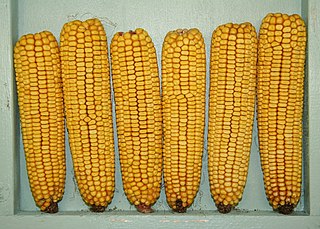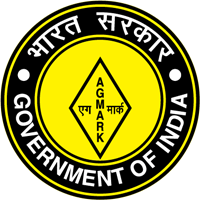Related Research Articles

A commodity market is a market that trades in primary economic sector rather than manufactured products. cocoa, fruit and sugar. Hard commodities are mined, such as gold and oil. Investors access about 50 major commodity markets worldwide with purely financial transactions increasingly outnumbering physical trades in which goods are delivered. Futures contracts are the oldest way of investing in commodities. Futures are secured by physical assets. Commodity markets can include physical trading and derivatives trading using spot prices, forwards, futures, and options on futures. Farmers have used a simple form of derivative trading in the commodity market for centuries for price risk management.

The Agricultural Adjustment Act (AAA) was a United States federal law of the New Deal era designed to boost agricultural prices by reducing surpluses. The Government bought livestock for slaughter and paid farmers subsidies not to plant on part of their land. The money for these subsidies was generated through an exclusive tax on companies which processed farm products. The Act created a new agency, the Agricultural Adjustment Administration, an agency of the U.S. Department of Agriculture, to oversee the distribution of the subsidies. The Agriculture Marketing Act, which established the Federal Farm Board in 1929, was seen as a strong precursor to this act. The AAA, along with other New Deal programs, represented the federal government's first substantial effort to address economic welfare in the United States.

The Animal and Plant Health Inspection Service (APHIS) is an agency of the United States Department of Agriculture (USDA) based in Riverdale, Maryland responsible for protecting animal health, animal welfare, and plant health. APHIS is the lead agency for collaboration with other agencies to protect U.S. agriculture from invasive pests and diseases. APHIS is the National Plant Protection Authority for the U.S. government, and the agency's head of veterinary services is Chief Veterinary Officer of the United States.

A bushel is an imperial and US customary unit of weight or mass based upon an earlier measure of dry capacity. The old bushel was equal to 2 kennings (obsolete), 4 pecks or 8 dry gallons and was used mostly for agricultural products such as wheat. In modern usage, the volume is nominal, with bushels denoting a mass defined differently for each commodity.

An inspection is, most an organized examination or formal evaluation exercise. In engineering activities inspection involves the measurements, tests, and gauges applied to certain characteristics in regard to an object or activity. The results are usually compared to specified requirements and standards for determining whether the item or activity is in line with these targets, often with a Standard Inspection Procedure in place to ensure consistent checking. Inspections are usually non-destructive.
The Canadian Food Inspection Agency (CFIA) is a regulatory agency that is dedicated to the safeguarding of food, animals, and plants, which enhance the health and well-being of Canada's people, environment and economy. The agency was created in April 1997 by the Canadian Food Inspection Agency Act for the purpose of combining and integrating the related inspection services of three separate federal government departments: Agriculture and Agri-Food Canada, Fisheries and Oceans Canada, and Health Canada. The establishment of the CFIA consolidated the delivery of all federal food safety, animal health, and plant health regulatory programs.

The Kansas Department of Agriculture is a department of the government of Kansas under the Governor of Kansas. It is responsible for providing services and expertise that promote and protect Kansas' food supply and natural resources while stimulating economic growth. The head of the Department is the Secretary of Agriculture, who is appointed by the Governor, with the approval of the Kansas Senate.

The Foreign Agricultural Service (FAS) is the foreign affairs agency with primary responsibility for the United States Department of Agriculture's (USDA) overseas programs—market development, international trade agreements and negotiations, and the collection of statistics and market information. It also administers the USDA's export credit guarantee and food aid programs and helps increase income and food availability in developing nations by mobilizing expertise for agriculturally led economic growth. In 2003, FAS began to return to a long-abandoned role in national security. The FAS mission statement reads, "Linking U.S. agriculture to the world to enhance export opportunities and global food security", and its motto is "Linking U.S. Agriculture to the World".

The National Agricultural Statistics Service (NASS) is the statistical branch of the U.S. Department of Agriculture and a principal agency of the U.S. Federal Statistical System. NASS has 12 regional offices throughout the United States and Puerto Rico and a headquarters unit in Washington, D.C.. NASS conducts hundreds of surveys and issues nearly 500 national reports each year on issues including agricultural production, economics, demographics and the environment. NASS also conducts the United States Census of Agriculture every five years.

The Grain Inspection, Packers and Stockyards Administration (GIPSA) is an agency of the United States Department of Agriculture that facilitates the marketing of livestock, poultry, meat, cereals, oilseeds, and related agricultural products, and promotes fair and competitive trading practices for the overall benefit of consumers and American agriculture. GIPSA was formed in 1994 through the joining of the Federal Grain Inspection Service and the Packers and Stockyards Administration.

The Under Secretary for Marketing and Regulatory Programs is a high-ranking position within the United States Department of Agriculture that supervises policy development and day-to-day operations of the Animal and Plant Health Inspection Service, the Agricultural Marketing Service, and the Grain Inspection, Packers, and Stockyards Administration. The three agencies were appropriated over $800 million by Congress in fiscal year 2004.
Standards of identity for food are mandatory requirements that are set by a governing body to determine what a food product must contain to be marketed under a certain name in allowable commerce. Mandatory standards, which differ from voluntary grades and standards applied to agricultural commodities, protect the consumer by ensuring a label accurately reflects what is inside.

The California Department of Food and Agriculture (CDFA) is a cabinet-level agency in the government of California. Established in 1919 by the California State Legislature and signed into law by Governor William Stephens, the Department of Food and Agriculture is responsible for ensuring the state's food safety, the protection of the state's agriculture from invasive species, and promoting the California agricultural industry.
The Ministry of Commerce (MOC) is the Burmese government agency plays a vital role in transformation process of the implementation of market oriented economic system. Its Headquarters is located at Building 3 and 52, Nay Pyi Taw, in Myanmar.

The Warehouse Act of 1916 permitted Federal Reserve member banks to give loans to farmers on the security of their staple crops which were kept in Federal storage units as collateral. This Act of Congress went far in securing the farm vote in the 1916 Presidential election.

Dent corn also known as yellow dent corn, Reid's yellow dent corn, white dent corn, or field corn, is a variety of maize or corn with a high soft starch content. It received its name because of the small indentation ("dent") at the crown of each kernel on a ripe ear of corn. It is a variety developed by northern Illinois farmer James L. Reid. Reid and his father, Robert Reid, moved from Brown County, Ohio to Tazewell County, Illinois in 1846 bringing with them a red corn variety known as "Johnny Hopkins", and crossed it with varieties of flint corn and floury corn. Most of today's hybrid corn varieties and cultivars are derived from it. This variety won a prize at the 1893 World's Fair.

Commodity Futures Trading Commission (CFTC) Act of 1974 created the Commodity Futures Trading Commission, to replace the U.S. Department of Agriculture’s Commodity Exchange Authority, as the independent federal agency responsible for regulating the futures trading industry. The Act made extensive changes in the basic authority of Commodity Exchange Act of 1936, which itself had made extensive changes in the original Grain Futures Act of 1922..

The United States Grain Standards Act (USGSA) of 1916(P.L. 64-190), as amended, authorizes the Grain Inspection, Packers and Stockyards Administration to establish official marketing standards for grains and oilseeds, and requires that exported grains and oilseeds be officially weighed and inspected. Domestically marketed grain and oilseeds may be, but are not required to be, officially inspected. Export inspections are carried out by federal inspectors or by federally supervised state inspection agencies, called delegated official inspection agencies. Official inspections of domestically traded grain is done by federally supervised state agencies and private companies, called designated official inspection agencies. Typically, marketing standards describe the physical characteristics of the commodity and serve as contract language to facilitate marketing. Official weighing and inspection is paid for on a fee-for service basis, not with federal funds. Major changes to the law were adopted in the USGSA Amendments of 1968, the USGSA of 1976, and the Grain Quality Improvement Act of 1986.

AGMARK is a certification mark employed on agricultural products in India,assuring that they conform to a set of standards approved by the Directorate of Marketing and Inspection an attached Office of the Department of Agriculture, Cooperation and Farmers Welfare under Ministry of Agriculture & Farmers Welfare an agency of the Government of India. The AGMARK Head Office at Faridabad (Haryana) is legally enforced in India by the Agricultural Produce Act of 1937 . The present AGMARK standards cover quality guidelines for 222 different commodities spanning a variety of pulses, cereals, essential oils, vegetable oils, fruits and vegetables and semi-processed products like vermicelli.
References
![]()

The Congressional Research Service (CRS), known as Congress's think tank, is a public policy research arm of the United States Congress. As a legislative branch agency within the Library of Congress, CRS works primarily and directly for Members of Congress, their Committees and staff on a confidential, nonpartisan basis.